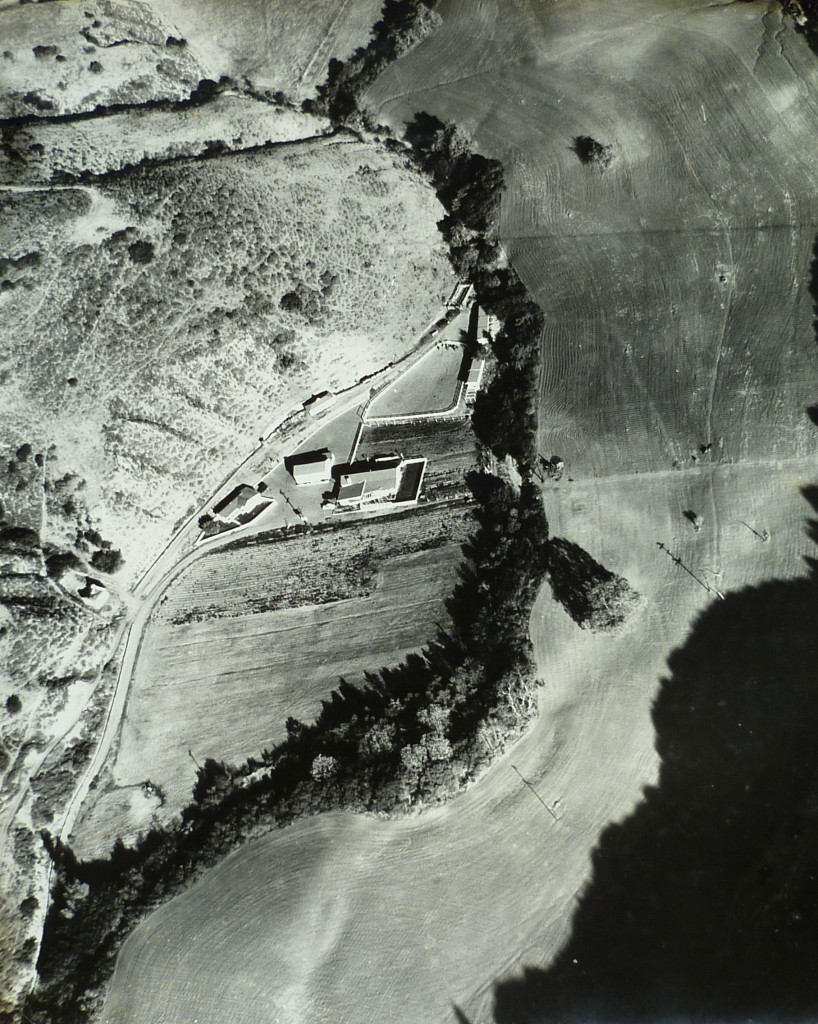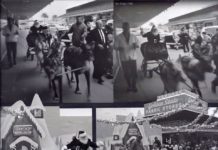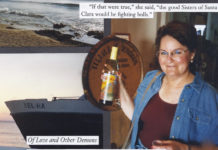By Bill Swank
The Kumeyaay people lived at the mouth of Tecolote Canyon for over 2,500 years. The name Tecolote Canyon appeared in 1845 on the first pueblo map of San Diego. By 1872, the San Diego Union reported Judge Hyde ranched “a fine tract of land in that beautiful little valley about a mile north of Old Town.”
The same year, the Daily Alta California noted Judge Hyde “has a well of water on his lands in the Tecolote Valley. It was sunk forty-nine feet. The surface of the grounds it is sunk in is about sixty feet above the level of of the sea and is located two miles from the shore of False Bay.” Finding water in California was as important as finding gold.
In 1882, the Fish family sailed to San Diego aboard the schooner, Matinee. Shortly after their arrival, William Fish built one of the first dwellings in Tecolote Canyon. His spinster daughter, Roberta Fish, lived in the house for over 50 years.
In the late 1910s, young Arthur Kelly and a friend explored Tecolote Canyon. When the boys returned home, Arthur asked his father, John Lincoln Kelly, “Where is the Grand Canyon?” The senior Kelly answered, “You mean the Grand Canyon of the Colorado? It’s away over in Arizona.” Arthur was certain that he and his companion had discovered the Grand Canyon.
According to a 1936 San Diego Tribune article, The Handbook of American Indians claimed the canyon was named for an abundance of vines which the Aztecs called “tecolil.” The theory was confirmed by George Marston’s brother-in-law, Chester Gunn. The Spanish word “tecolote” more accurately describes “the canyon of the burrowing owl” or “the large horned owl.”
The Romo family farmed and ranched the south end of the canyon from the early 1930s until 1962 when their wooden home burned to the ground. Russell (74), the youngest of five children (Richard, Ralph, Rudy and Rita), recalls that everybody knew his father, Richard Romo.
“Whenever the city would try to move us out of the canyon, my father would tell them we’ve got squatter’s rights and they’d leave us alone. The gas and electric company ran some poles through the canyon right by our house. My father worked out a deal. He paid $10 a year and we could stay.”
“People couldn’t believe we’d climb the hill to Kelly Street and go to school in Linda Vista. We didn’t have electricity, plumbing or running water. In the winter when it rained, there was lots of water in the creek and we’d make boats.”
Russell also remembers rounding up cattle and goats that would climb the canyon trails and get into people’s backyards. He explained the family had their own brand for the Romo Ranch. “It was two R’s. The one on the left was an upside-down R.”

In the 1940s, there was a festival in Old Town. Mr. Romo loaded goats and hogs and drove to San Diego Avenue where he released them. Russell remembers watching the people try to catch the livestock. We need more celebrations like that today.
Russell’s father was of Spanish descent and his mother was a member of the Luiseño tribe. Russell served for a time as the chairman of the San Luis Rey Band of Mission Indians.
In 1946, Dr. Charles Isham bought 101 acres of arable land at the mouth of Tecolote Canyon. He was an obstetrician and wanted to raise his kids on a farm. At the time, Larry was 6, Robert was 3 and Carol Ann was a newborn. This slice of heaven was called Tecolote Valley Farm.

“My dad was a very charismatic, very kind, soft spoken man who always had time to listen to us,” Carol Ann remembered fondly.
“Dad had a coronary in 1957, sold the farm, put his practice on hold and moved the family to Guadalajara while he recuperated,” said Larry. “Before that, in addition to delivering babies, he was a gentleman farmer.”
Mrs. Claradora Isham wrote a comprehensive family history. “We raised horses, cows, pigs, chickens by the hundreds, alfalfa, oats, some fruits and berries, almost all our vegetables, especially artichokes.”
Larry recalled, “We ate artichokes all the time.” Carol added, “We (the kids) even sold them in Mission Hills. We loved living on the farm.”
She remembered riding her bike near the home as a young girl. “We had what we called the high road and the low road. There was a flat spot by the high road and my mother told us that nuns once lived there.”
In my research, I noted the Sisters of Mercy built a late 19th century retreat on a former hog farm in Tecolote Canyon. Carol Ann’s off-hand statement is the only supportive information found about a two-story building that was used for an orphanage. The sisters also started a small infirmary that became Mercy Hospital.
Middle-brother Bob remembered hunting jackrabbits in the canyon and barren mesa top. “They were all over the place.” Typical farm kids, the boys learned to drive a war surplus jeep when they were very young. “I loved spinning broadies (donuts) with big rooster tails,” confessed Bob. It was a time when kids had a lot of freedom.

Like Russell Romo, the Ishams remember the canyon was full of owls. All three laughed when told the Romo kids would sneak over and ride their horses bareback. “It’s too bad we didn’t get to know them. I hope they didn’t get hurt riding bareback,” Carol Ann commented. “Our horses were named Chico, Tango and Klondike.”
Larry remembers, “My dad teamed up with a Hollywood film crew and they filmed us riding horses all over Clairemont. It was all open space back then.”
It was an idyllic time for the Ishams. All become emotional about life on the farm and rarely visit the property, because so much has changed.
Larry Isham does not remember people dumping trash near his home. The canyon was still primeval in the 1950s. That would change. Next month’s column will detail how Tecolote Canyon was saved.





